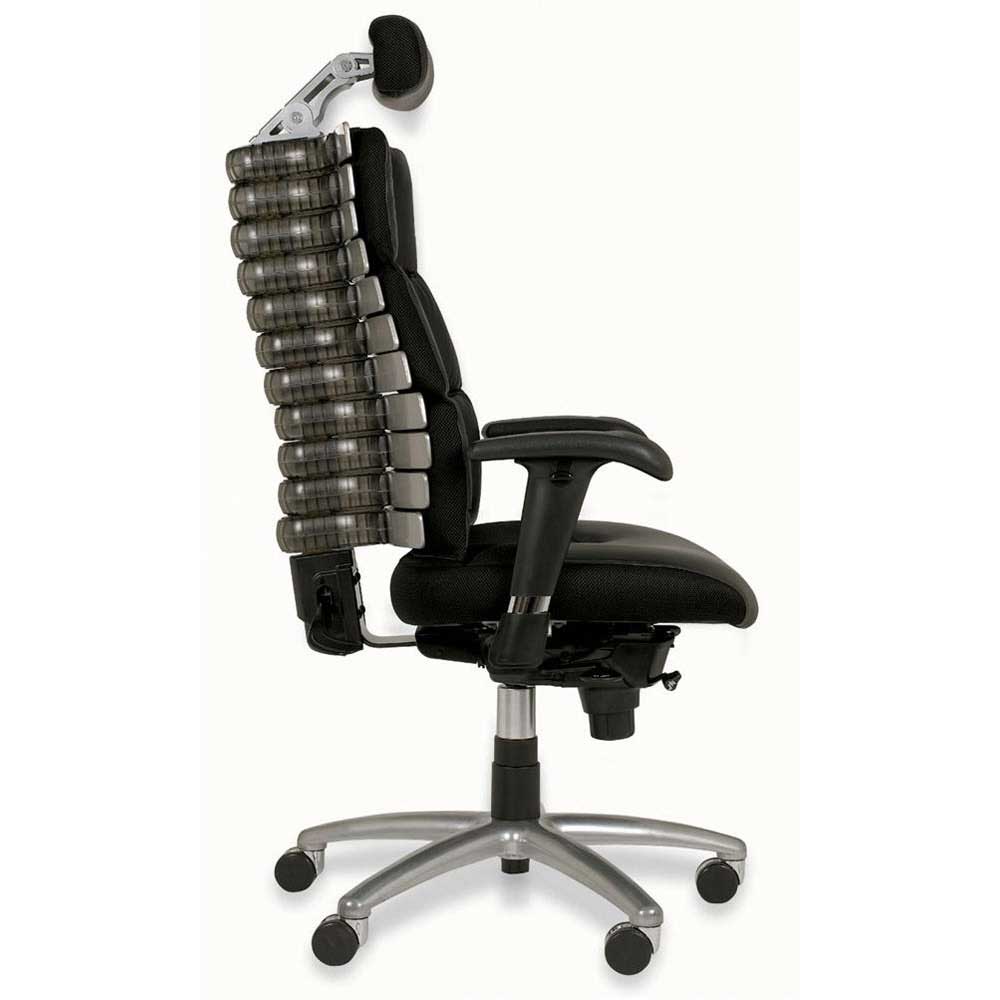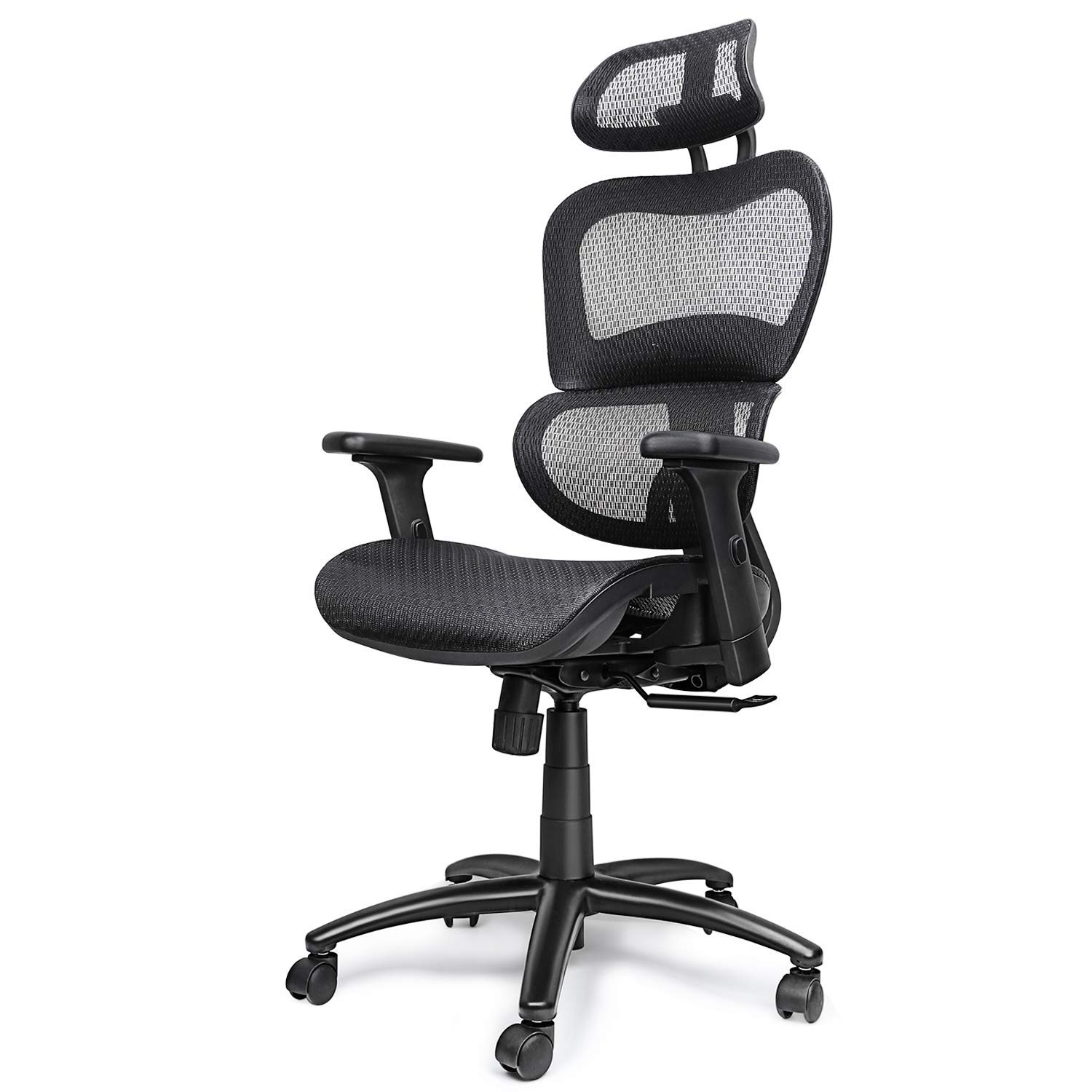Understanding Lower Back Pain and Office Chairs

Lower back pain is a common ailment that can significantly impact daily life. Spending prolonged periods sitting, especially in an office setting, can contribute to this discomfort. Understanding the causes of lower back pain associated with sitting and how ergonomic office chairs can alleviate these issues is crucial for maintaining good health and productivity.
Causes of Lower Back Pain from Sitting
Sitting for extended periods can strain the lower back muscles and ligaments, leading to discomfort and pain. The lack of movement and improper posture can contribute to various issues, including:
- Muscle Imbalances: Sitting for long hours can cause certain muscles in the back to become tight and weak, leading to imbalances that put stress on the lower back.
- Disc Degeneration: Prolonged sitting can increase pressure on the intervertebral discs, which are cushions between the vertebrae. This pressure can lead to disc degeneration and pain.
- Reduced Blood Flow: Sitting for long periods can restrict blood flow to the lower back muscles, leading to stiffness and pain.
- Poor Posture: Slouching or sitting in a position that does not support the natural curve of the spine can put excessive strain on the lower back.
Ergonomic Features for Lower Back Support
Ergonomic office chairs are designed to promote good posture and reduce strain on the lower back. They incorporate features that support the natural curvature of the spine and distribute weight evenly. Here are some key ergonomic features that address lower back pain:
- Lumbar Support: This feature provides a contoured backrest that supports the natural curve of the lower back, reducing pressure and promoting proper posture.
- Adjustable Seat Height: An adjustable seat height allows you to position your thighs parallel to the floor, ensuring proper leg alignment and reducing strain on the lower back.
- Adjustable Backrest: A backrest that can be adjusted in terms of angle and height allows you to find the optimal position for your spine, promoting comfort and reducing strain.
- Armrests: Adjustable armrests help to support the arms and shoulders, reducing pressure on the neck and upper back, which can indirectly contribute to lower back pain.
- Seat Depth: The seat depth should allow for adequate support while preventing pressure on the back of the knees, which can hinder blood flow and contribute to lower back pain.
Examples of How Poor Posture and Inadequate Chair Support Exacerbate Lower Back Issues
Imagine someone working at a desk for hours, hunched over a keyboard with their back unsupported. This posture puts significant strain on the lower back muscles, leading to discomfort and pain. Additionally, if the chair lacks adequate lumbar support, the natural curve of the spine is not maintained, further exacerbating the problem. This can result in chronic lower back pain and potentially even more serious conditions.
“Studies have shown that prolonged sitting with poor posture can lead to a significant increase in lower back pain, especially among office workers.” – American Chiropractic Association
Another example is using a chair that is too low or too high. If the seat is too low, the knees will be higher than the hips, putting strain on the lower back. Conversely, a chair that is too high will force the individual to lean forward, again straining the lower back muscles.
- Example 1: A student sitting for hours at a desk with a chair lacking lumbar support, hunched over a laptop, experiencing back pain and discomfort. This scenario highlights the negative impact of inadequate chair support and poor posture.
- Example 2: An office worker using a chair with a fixed backrest, unable to adjust the height or angle to suit their individual needs. This lack of adjustability can lead to discomfort and strain on the lower back.
Key Features to Look for in an Office Chair for Lower Back Pain

Finding the right office chair can be a game-changer for managing lower back pain. By choosing a chair with specific features, you can promote proper posture, reduce strain, and alleviate discomfort.
Lumbar Support, Best office chair for lower back issues
Lumbar support is crucial for maintaining the natural curve of your lower back, preventing strain and promoting comfort. It provides targeted support to the lumbar region, reducing pressure on the spine and preventing slouching.
Types of Lumbar Support
- Adjustable Lumbar Support: This type of support allows you to customize the level of support to fit your individual needs. It can be adjusted up or down, in or out, to provide the perfect fit. This flexibility is particularly helpful for people with varying body types and postures.
- Built-in Lumbar Support: These chairs have a fixed lumbar support mechanism integrated into the backrest. While less customizable, they can still provide adequate support for many users. The key is to ensure the built-in support aligns with your natural lumbar curve.
Seat Height, Depth, and Tilt Adjustments
Proper seat height, depth, and tilt are essential for maintaining a neutral spine position. These adjustments allow you to achieve a comfortable and ergonomic sitting position, minimizing strain on your lower back.
Seat Height
- Correct Seat Height: The optimal seat height allows your feet to rest flat on the floor with your knees slightly lower than your hips. This ensures your thighs are parallel to the floor and your lower back is supported.
- Adjusting Seat Height: Most office chairs come with adjustable seat height mechanisms. Adjusting the height to fit your body ensures proper leg and back alignment. If your chair lacks height adjustment, consider using a footrest to achieve the correct position.
Seat Depth
- Correct Seat Depth: The ideal seat depth allows for a small gap between the back of your knees and the edge of the seat. This prevents pressure on the back of your thighs and promotes proper blood circulation.
- Adjusting Seat Depth: Some chairs offer adjustable seat depth mechanisms. Adjusting the depth ensures your thighs are supported and prevents slouching. If your chair lacks depth adjustment, consider using a cushion to fill the gap between your back and the seat.
Seat Tilt
- Correct Seat Tilt: A slight forward tilt of the seat encourages a more upright posture and reduces pressure on your lower back. However, excessive tilt can lead to discomfort and strain.
- Adjusting Seat Tilt: Many chairs offer adjustable seat tilt mechanisms. Experiment with different angles to find the most comfortable position for your back.
Popular Office Chair Options for Lower Back Pain: Best Office Chair For Lower Back Issues

Best office chair for lower back issues – Finding the right office chair for lower back pain can be a daunting task, given the vast array of options available. Fortunately, there are several well-regarded brands and models known for their ergonomic features and back support. These chairs often incorporate lumbar support, adjustable features, and breathable materials to promote good posture and minimize discomfort.
Popular Office Chair Options for Lower Back Pain
The following table highlights some popular office chair brands and models known for their back support. It provides a brief description of each chair, highlighting key features beneficial for lower back health, along with a price range and user reviews or ratings.
| Brand | Model | Description | Price Range | User Reviews/Ratings |
|---|---|---|---|---|
| Herman Miller | Aeron Chair | The Aeron chair is a classic ergonomic chair known for its breathable mesh fabric, adjustable lumbar support, and forward tilt feature. It offers excellent support and breathability, making it suitable for long hours of sitting. | $800 – $1,500 | 4.5/5 stars |
| Steelcase | Leap Chair | The Leap chair features a flexible backrest that adapts to the user’s posture, adjustable lumbar support, and a range of seat adjustments. It provides excellent back support and comfort for users with varying body types. | $700 – $1,200 | 4.3/5 stars |
| Haworth | Zody Chair | The Zody chair is designed with a focus on comfort and support. It features adjustable lumbar support, a breathable mesh backrest, and a variety of seat adjustments. It’s a popular choice for users who prioritize comfort and ergonomics. | $600 – $1,000 | 4.2/5 stars |
| Humanscale | Freedom Chair | The Freedom chair is known for its innovative design that allows for a wide range of movement. It features a self-adjusting backrest, adjustable lumbar support, and a unique “tri-dimensional” seat that promotes proper posture. | $900 – $1,600 | 4.4/5 stars |
While a good office chair can alleviate lower back issues, the reality is that many people are forced to prioritize affordability over ergonomic perfection. If you’re on a tight budget, best office chair 100 guides can offer some solace, but remember that even the most highly-rated budget chairs are unlikely to provide the same level of support as their more expensive counterparts.
The bottom line? If your back is a priority, consider investing in a chair that prioritizes your health, even if it means sacrificing some of your budget.
The “best office chair for lower back issues” is a phrase thrown around like a political slogan, promising relief but often delivering only empty promises. Instead of falling for the corporate hype, consider exploring the best bean bag chair with back support for a more comfortable and ergonomic alternative.
While bean bag chairs may not be the most traditional office furniture, they offer a unique approach to spinal health, encouraging a more relaxed posture and reducing pressure on the lower back. After all, true comfort isn’t a political statement, it’s a personal choice.
